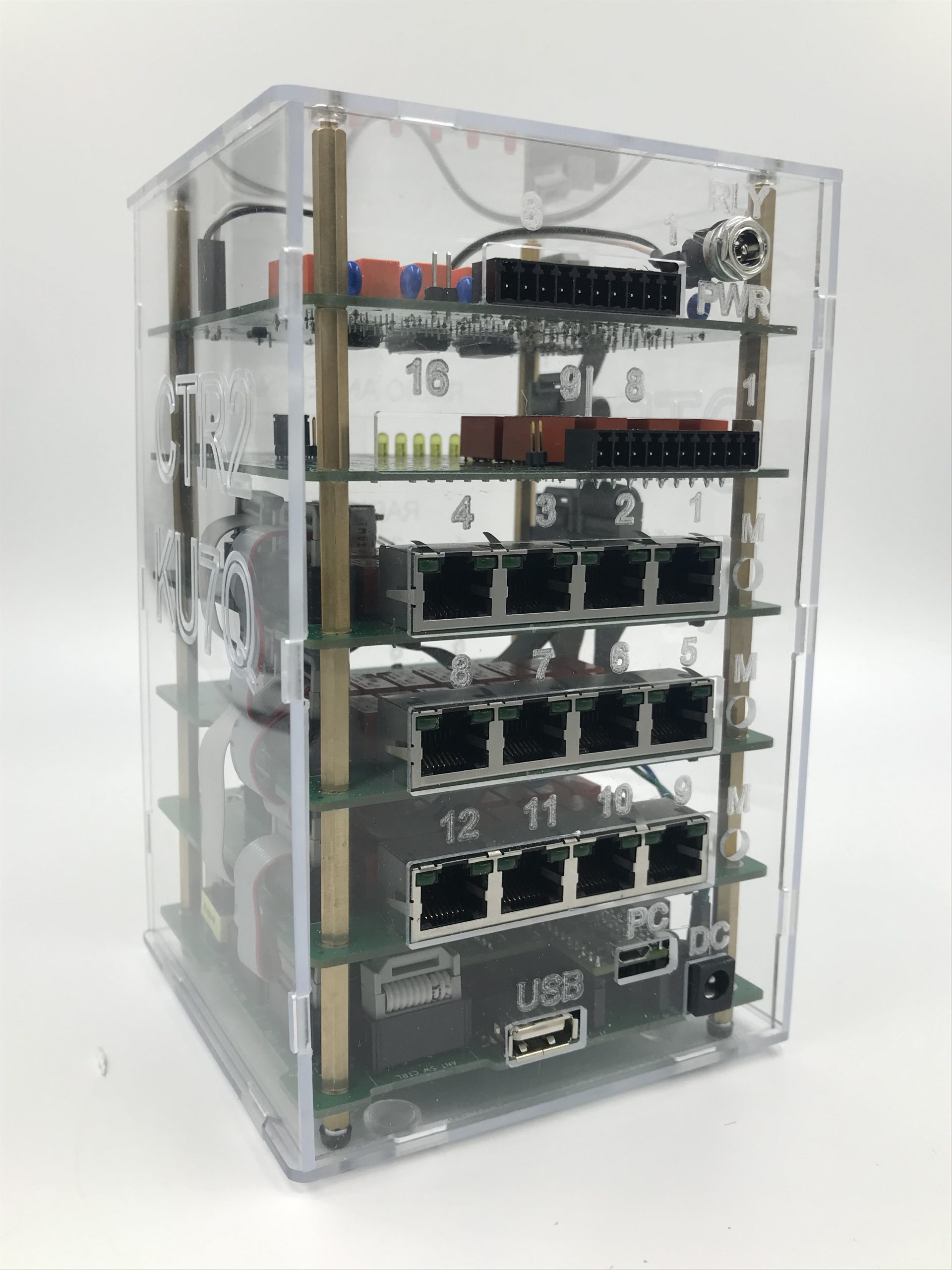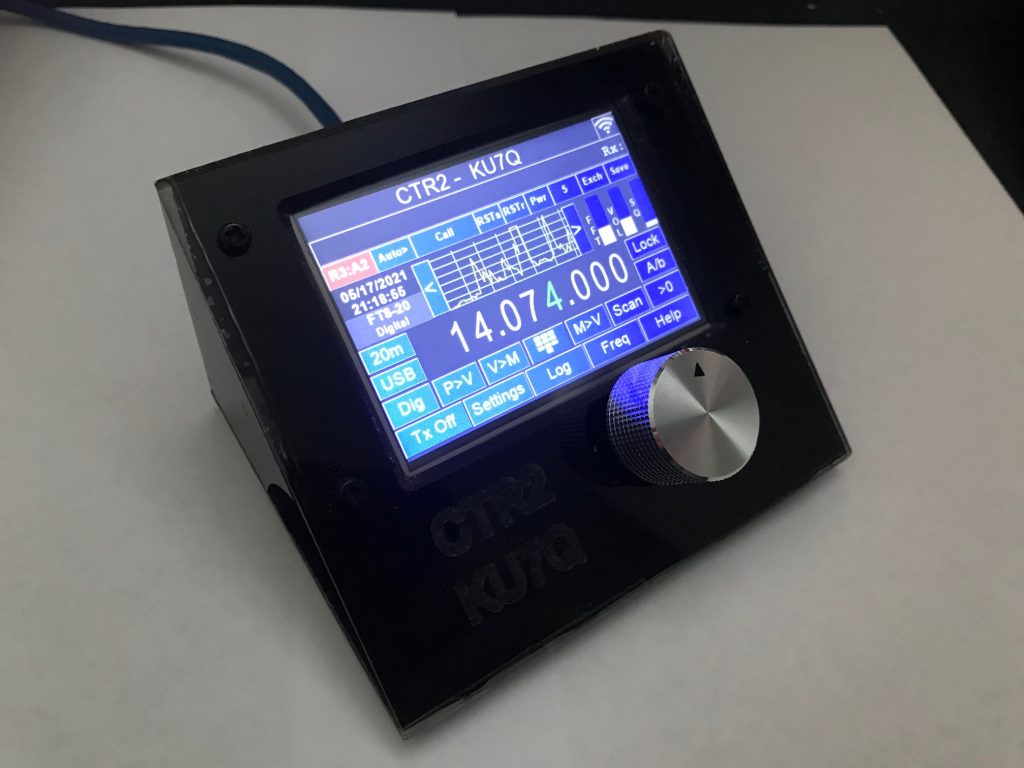March 2022
Due to the unavailability of several of the components used to build CTR2 I’ve decide to discontinue it. Instead, I have created CTR2-Mini, a smaller, less expensive controller. Please consider it if you’re interested in building a small station controller.
CTR2 is a unique human-machine interface (HMI) that allows you to control and manage up to 16 radios and 8 antennas using a small touch screen user interface on your desktop, or from an Internet browser anywhere in the world.
At first glance you’re probably thinking that CTR2 is designed for large, complex contest stations. NOT TRUE! CTR2 was designed from the start to be scalable. This means that CTR2‘s features are available for every station, from the modest one radio, one antenna station to the collector station with 16 radios and 8 antennas.

The CTR2 system is based on the Teensy 4.1 development board and audio interface provided by PJRC.com. The Teensy 4.1 features an ARM Cortex-M7 processor running at 600 MHz. Audio DSP processing is handled by a NXP SGTL5000 codec on the PJRC Rev D Audio Adapter board. The firmware is based on the Teensyduino 1.54 library, and uses the Arduino ecosystem. This library allows the Teensy 4.1 to be programmed in Arduino C/C++ and provides an extensive set of tools. It also provides a wide selection of easy to use audio tools that operate in the digital domain such as amplifiers, mixers, tone generators, tone detectors, equalizers, compression amps, and FFT frequency analysis. These functions are available for any radio connected to the system, from the latest all digital SDR radio to the oldest boat anchor.
There are two options available to control the system.
NEXTION TOUCHSCREEN DISPLAY
This option uses a Nextion 3.5″ or 5″ Enhanced HMI touch screen display and one rotary encoder to control the user interface. A photo of the Home page on this display is shown below. Provisions have been made to allow mounting the display and encoder in the same enclosure as the HMI or they can be remotely mounted in a small wedge shaped enclosure. Remote mounting lets you place the display anywhere it’s convenient. Tuning and parameter changes are managed using the touch screen, encoder, a USB keyboard, or a USB mouse.

NODE-RED
The second option uses Node-RED, a free browser based user interface that replaces the Nextion display. The user interface is similar to the touchscreen except that most user interaction is handled using the mouse. This option also provides the capability to remotely control the HMI (and your radios) via the internet using any device with a modern browser. Just add an audio transport application such as SonoBus and you can take your station with you. A photo of the Node-RED Home page with the Tx Memory, VFO, Log Entry, and Auto Log panels enable is shown below.

The functional drawing in the lead photo shows a large system with four radios and four antennas. Additional Radio I/O modules and antennas can easily be added to expand the system to control 16 radios. Conversely, a starter system with just the HMI and an Auxiliary Option 1 board can be deployed to control one radio.
The first CTR2 article covering the basic system was published by the ARRL in the September/October 2021 issue of QEX magazine. A follow-up article describing the radio I/O and antenna switching options supported by the system was published in the January/February 2022 issue. I’d like to thank Kai and Maty at the ARRL for their support and professionalism in making this happen. They have quite a challenge putting together a magazine based on articles from amateur authors like me and they pull it off beautifully.
